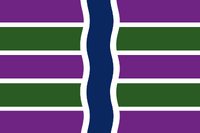Tag: Visual edit |
(Editing a gallery) |
||
| Line 77: | Line 77: | ||
Screen Shot 2019-06-26 at 7.12.32 PM.png|Inspired by a design by "Sammy" [see above]. Posted by Ken Morton. |
Screen Shot 2019-06-26 at 7.12.32 PM.png|Inspired by a design by "Sammy" [see above]. Posted by Ken Morton. |
||
Connecticut - Fairfield County.png|He who is transplanted, is sustained. [My home state] Posted by Ken Morton |
Connecticut - Fairfield County.png|He who is transplanted, is sustained. [My home state] Posted by Ken Morton |
||
| + | CT_PNG.png|The blue vertical line represents the Connecticut River (the longest in New England) cutting across the state, The three purple lines represent the grapevines in the state seal dating from 1635, as well as the original three colonial districts which united to form the state: Windsor, Wethersfield, and Hartford. The green bars run between the purple District bars and across the River bar, symbolizing the significance of the Charter Oak, which both helped unify and establish the state. The white backdrop represents the paper on which the US Constitution was written and the state’s nickname “Constitution State.” |
||
</gallery> |
</gallery> |
||
Revision as of 20:58, 27 October 2019
| This page uses Creative Commons licensed content from Wikipedia. (view authors) |
The flag of the state of Connecticut consists of a white baroque shield with three grapevines (each bearing three bunches of purple grapes) on a field of azure blue. The banner below the shield reads "Qui Transtulit Sustinet" ("He who transplanted still sustains"), the state's motto.
The Connecticut General Assembly approved the flag in 1897 after it was introduced by Governor Owen Vincent Coffin in 1895.
The design comes from the seal of Saybrook Colony when it was established in 1639. That seal depicted 15 grapevines and a hand in the upper left corner with a scroll reading "Sustinet qui transtulit". When Connecticut Colony bought Saybrook in 1644, the seal transferred to Connecticut Colony. On October 25, 1711, the governor and legislature changed the seal. They reduced the number of grapevines from 15 to three, in order to represent the three oldest settlements (Windsor, Wethersfield, and Hartford) (or possibly the three separate settlements, Connecticut Colony, Saybrook Colony, and New Haven Colony, which had been absorbed into Connecticut by that time) and rearranged the wording and position of the motto.
Proposals for a New Flag of Connecticut
Shown below are various designs for a proposed new flag of Connecticut.
Most common symbolism
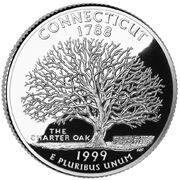
Connecticut state quarter
Besides the grapevines from the state seal, the most common symbol is the Charter Oak. According to tradition, Connecticuters hid their colony's charter inside a giant oak tree in Hartford to prevent its falling into the hands of Sir Edmund Andros, who had been sent by King James II to impose stronger royal control. The oak became a symbol of Connecticut's independence. It is the dominant symbol on its state quarter.













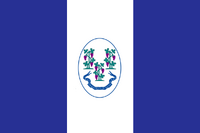



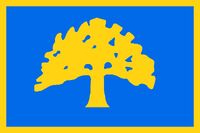
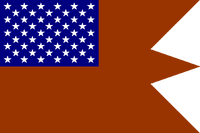




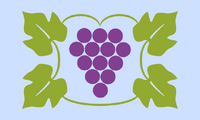










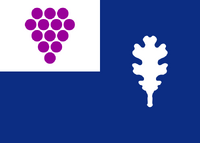

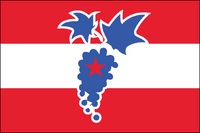

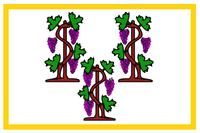



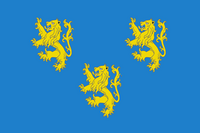


![Conn 2.png (46 KB) As a unifying design principle, I believe the flags of the original thirteen states should, when possible, incorporate thirteen stars. Above is my proposed design for a new flag for my home state. [Posted by Ken Morton]](https://static.wikia.nocookie.net/vexillology/images/4/41/Conn_2.png/revision/latest/scale-to-width-down/200?cb=20181114174312)
![Conn 2 copy.png (132 KB) Yet another 'Charter Oak' flag. This design builds upon earlier submissions by multiple users. [Posted by Ken Morton]](https://static.wikia.nocookie.net/vexillology/images/8/89/Conn_2_copy.png/revision/latest/scale-to-width-down/200?cb=20181121030504)
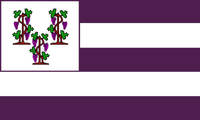



![Connecticut - Red Stars.png (57 KB) Connecticut state flag proposed by Ken Morton [June 26, 2019] I like this one.](https://static.wikia.nocookie.net/vexillology/images/1/10/Connecticut_-_Red_Stars.png/revision/latest/scale-to-width-down/200?cb=20190626145947)
![Screen Shot 2019-06-26 at 2.17.59 AM.png (68 KB) Yet another state flag for Connecticut. Really, anything would be better than our current flag. [Borrowed the grapes from "Bezbojnicul".] Posted by Ken Morton](https://static.wikia.nocookie.net/vexillology/images/5/50/Screen_Shot_2019-06-26_at_2.17.59_AM.png/revision/latest/scale-to-width-down/200?cb=20190626150303)
![Screen Shot 2019-06-26 at 7.12.32 PM.png (90 KB) Inspired by a design by "Sammy" [see above]. Posted by Ken Morton.](https://static.wikia.nocookie.net/vexillology/images/5/59/Screen_Shot_2019-06-26_at_7.12.32_PM.png/revision/latest/scale-to-width-down/200?cb=20190627000023)
![Connecticut - Fairfield County.png (269 KB) He who is transplanted, is sustained. [My home state] Posted by Ken Morton](https://static.wikia.nocookie.net/vexillology/images/a/a7/Connecticut_-_Fairfield_County.png/revision/latest/scale-to-width-down/200?cb=20191022032458)
